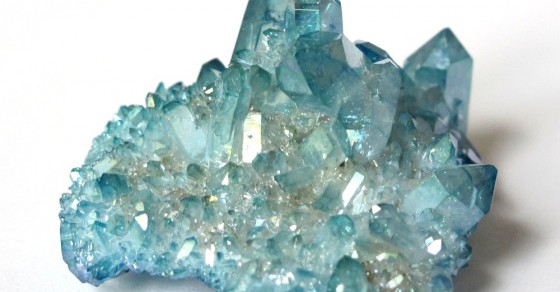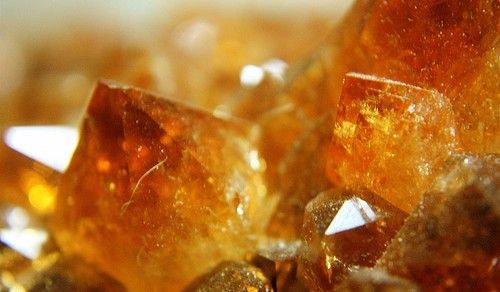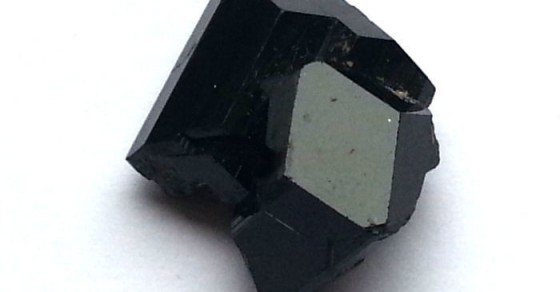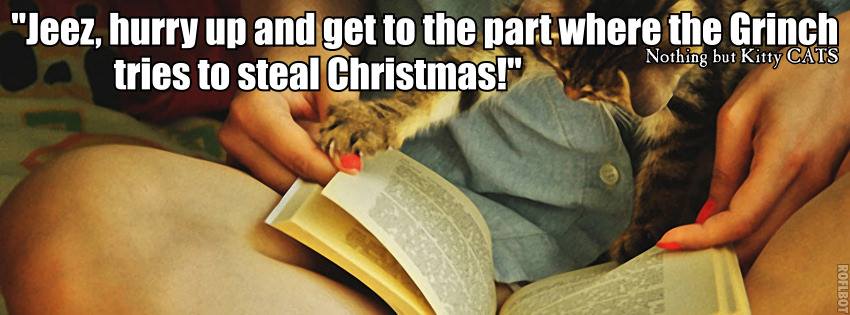Expert veterinarian Dr. Tina, speaks out in a short series about Heartworm Disease and the effects it has on pets. Come listen & learn…to part 3!
*If you have more questions or would like to book an appointment please go to: www.tomobilevet.com

Expert veterinarian Dr. Tina, speaks out in a short series about Heartworm Disease and the effects it has on pets. Come listen & learn…to part 3!
*If you have more questions or would like to book an appointment please go to: www.tomobilevet.com
Expert veterinarian Dr. Tina, speaks out in a short series about Heartworm Disease and the effects it has on pets. Come listen & learn…to part 2!
*If you have more questions or would like to book an appointment please go to: www.tomobilevet.com
Expert veterinarian Dr. Tina, speaks out in a short series about Heartworm Disease and the effects it has on pets. Come listen & learn…to part 1!
*If you have more questions or would like to book an appointment please go to: www.tomobilevet.com
We’re running a super fabulous contest this month and it involves you! We have our first TTC subway campaign running and we want you to spot it and get $30 off your next appointment! Here are all the rules:
Toronto Mobile Veterinary Services (TMVS) Promotional Contest Details:
*Contestants will take one photo of a TMVS TTC Subway ad OR TMVS Metro Newspaper ad during the period of September 15th 2014. One $30 credit will be awarded to each contestant, once per household. A maximum of $30 credit per household will be awarded and applied towards any TMVS veterinary service visit transaction of your choice (excluding Mon Chou products).
*The $30 credit expires in one year, September 29, 2015. This $30 credit has no cash value and is not applicable outside of TMVS services.
In order to be eligible for this $30 credit, contestants must submit their photo of our TMVS TTC Subway ad OR Metro Newspaper ad via any social media platform of their choice: Instagram, Facebook, Twitter, Google+ or Pinterest. Upon posting this photo, ensure it is hash-tagged with #tmvscontest. The photo submission must be hashtagged within the contest time period (September 15 – 29, 2014).
*When booking a service with TMVS, please notify in your booking that you have participated in this contest so the $30 credit can be validated and applied to your requested service transaction.
*Enjoy and happy photo snapping!!!
Today’s talk is about at-home care measures pet guardians can take to manage their pet’s weight. With your family veterinarian, an ideal body weight for your pet should be discussed so that you can help ensure they stay at an optimal healthy weight and body condition. Although the beginning of this talk will be about obesity management, the suggested tips for tracking your pet’s at-home weight can be used for pets that are underweight or as a general wellness measure of how their weight is trending over a period of time or until their next biannual or annual veterinary visit.
Being significantly overweight to cause medical concern or what we call obesity has become an extremely important health problem in the Western world, not just for humans, but for dogs and cats as well.
The good news is weight management can become an easy daily routine to establish in the household and can be the most cost-effective and health-effective ways to maintain and improve your pet’s quality of life. As a pet guardian you are the voice and primary caregiver of your pet. Your pets trust in your love and decisions you make on their behalf to ensure they live a happy healthy lifetime with you. Part of this at-home weight management process will be for you to be patient, establish a trusting relationship with your veterinarian so that you can voice the concerns of your pet at at-home progress. In turn your family veterinarian will provide follow-up recommendations. If you feel recommendations may be difficult to attain, discuss and be open with your veterinarian. Without knowing what you feel your pet needs, it is hard for your family veterinarian to generate a plan of care that will work for you, what you feel represents the needs of your pet (remember you are the voice of your pet) without compromising best health advice to achieve the common goal you share with your veterinarian—that is to ensure your pet shares a happy and healthy lifetime with you.
Being patient with yourself and your pet, consistent in their feeding schedules and recommendations your veterinarian advises are important considerations to a successful at-home weight management program. More importantly before starting your pet on weight management, you as the guardian should become consciously aware as to why it is important for your pets to be on this program. I always feel any decisions that you make in life, and it extends beyond starting your pet on a weight control program, it can be about what job you want to apply for, relationships you want in your life, a place you want to visit—these decisions are more real or true to the individual if they come to the decision to make this commitment for themselves. Do your own research, ask yourself if it would make you happy for your pet to be at a healthy weight, speak to your own family veterinarian for support so that you can understand for yourself and become familiar with why it is important to establish weight management goals. In this way, you become empowered in the care and health decisions of your pet and your life.
Complications of overweight pets can be costly not only in a monetary sense to manage, but more vitally excessive weight costs our pets a chance for a good quality of life. Here are several of the following complications:
Joint pain or early development of arthritis from excess weight on their limbs that are not accustomed or evolved to carry this extra weight requiring potential surgery or even a lifetime of medications to ease the pain that have precautionary side-effects.
Type II diabetes mellitus as tissues start to develop resistance in taking up sugar in the blood from even a regular meal requiring treatment with daily injections of insulin.
Respiratory disease as extra fat insulation around the chest makes it harder or requires more work to move the respiratory muscles. This in turn causes a decreased ability for the chest to expand and inflate the lungs with air. Also, fat around throat structures restricts airway passage down our trachea/windpipe causing resistance to airflow making it difficult to breathe.
Heat Stroke develops more readily in our overweight pets as well during the warmer months. Also a severe medical concern when it develops.
Liver failure from fatty liver disease in cats that are overweight can develop more readily if they are not eating as well. It is called fatty liver disease or the medical term, hepatic lipidosis, because fat from tissues within the body naturally are mobilized to provide calories if our cats are not eating. If our cat is overweight, a large amount of fat is mobilized at once and is taken up by liver cells. The liver is a specialized organ used to metabolize and detoxify the body. With liver cells filled up to the brim with fat, the functional parts of the liver cell essentially gets “crushed” or “gummed up” that they liver can no longer do its job. This leads to liver failure and causes our cats to become nauseous because of toxin build up and discomfort.
When our pets are overweight, they also have difficulty grooming themselves so their fur becomes dull, they develop fur matts. Fur matts are like dread locks, but they are quite uncomfortable as they can be flush to the skin pulling it tight, causing pain and discomfort. Their skin can develop scales, sores and bacterial infection.
All of these aforementioned complications negatively affect the health of our pets and reduce their lifespan. Another consideration is some of these diseases may require surgery to alleviate, but because of overweight issues especially with the aforementioned respiratory diseases or systemic illness that can develop from obesity, they are not ideal surgical candidates due to anesthetic risk.
Now I will talk about at-home care measures pet guardians can take to help their pets achieve and keep optimal body weight.
Exercise—yes exercise is great, but for overweight pets, strenuous or over-exercise can be harmful especially on the joints. Excessive activity on joints already bearing more weight than they are adapted to bear, can cause ligamental injury of the limbs requiring surgery. Also, when exercise is started when a pet is overweight, it can cause respiratory issues for the complications discussed earlier. Fat around the chest and throat regions can make breathing more difficult for our overweight pets and also cause them to overheat. Before starting your pet on a more active exercise regimen, it will be priority to get their weight slimmed down first. In the meantime, short leash-walks, keep your pets in cool environments and even swimming rather than running or strenuous play at the outset. Speak to your family veterinarian about some more gentler exercise options that your pet can be started.
So, what at-home options are there to get their weight safely down? Calorie restriction.
From a physical examination, your family veterinarian will help you find out an ideal weight for you pet based on their current body condition. Your family veterinarian will grade your pet’s body condition based on a 9 scale or 5 scale. The higher the number, the more severe the ramifications are for your pet that is overweight.
Then, based on the current diet you are feeding your pet, you veterinarian will calculate the daily calories or daily amount your pet should be fed to achieve this ideal weight gradually over the next 6 month to 1 year.
Your family veterinarian will talk about spreading the daily feeding amount into smaller more frequent meals. We call this a restricted feeding schedule. Leaving food out all day encourages snacking or finishing the entire meal so it is not rationed out for later in the day when your pet becomes hungry again. Learning to feeding restricted meals makes it easier to feed multiple pets different foods or different amounts of food. For multiple pet households, feed your pets in separate rooms or across barriers. Currently I have two kitties Mooky and Roly and so may daily routine consists of waking up in the morning putting out measured amounts of food for Mooky and Roly at separate sides of an kitchen island. Once I am ready to leave for work, if Roly has not finished his meal, but has walked away from his bowl, I will take both food bowls away so that my other cat Mooky does not mow down on calories that do not belong to him. In the evening when I am back from work, I will again re-measure their evening meals for them. Any remainder of food from this morning either gets discarded so I start fresh or used in the calculation of their evening meal.
Learning a restricted feeding technique for any pet who is underweight, overweight or even at their ideal weight will make you better caregivers. This is because it will help you to monitor how much your pet is eating throughout the day and if they are not eating as well because there is still food in the bowl, it may alert you to bring this to the attention of your veterinarian.
The next part of your at-home weight management program is to trend or track their progress at home. This is simple and easy to do. To help trend weight progress at home, you can weigh your pet ONCE a month by weighing yourself while holding your pet over a weight scale and then subtract your weight. You can purchase a pretty calendar just for your pet and record this weight value on this calendar when you weight him or her once a month. The idea is to see a gradual decreasing trend over the next 6 months to a year. If you are finding there is no change or there is an increase in weight or if your pet is already an underweight pet and they are losing more weight, contact your family veterinarian for guidance and professional advice.
If you have any questions or concerns , speak to your family veterinarian. If you would like to schedule a phone consult with me regarding this topic, please visit the Toronto Mobile Veterinary Services website at www.tomobilevet.com and book online.
One of the most important things you can do as a pet guardian to ensure a healthy and happy pet is to feed them right. Many of my pet guardians have asked me for recommended healthy diets for their pets. It is so wonderful that in this day and age there is a plethora of nutritional information out there and different formulations of well-balanced diets. From organic to non-genetically modified, locally grown, gluten-free produce, raw diets, home-cooked diets, commercial diets—the list can go on. It can cause the average consumer to become overwhelmed with what to put on their pet’s dinner plate let alone on our own plates as humans.
In a series of talks, I am going to go through different home-made food recipe ideas for your pets if you prefer home-prepared meals. My pets have been on it all—being a mom that desires to provide the best for her fur babies. They have been on raw, cooked and commercial foods. The recipes I will share with you are ones that my pets have tried, love and enjoy.
There are very tasty diets out on market for our pets that are given the nickname of the McDonald’s of pet foods as they are not nutritionally balanced. I’ve given a can or 2 of these generic pet foods on a very occasional basis. Of course there are more balanced food choices out there, the same goes for us humans, but we are here to enjoy living our lives with our pets by our side and to share in their unconditional love for us rather than become too meticulous and stressed about what to feed them. All that is asked of us pet guardians is to do the best we can for them. If your decisions are from the intention of love and made with informed research, you will find a diet suitable for you and your pets needs. If your pets have any specific medical conditions or you want more specific diet recommendations or assistance regarding this, please speak to your family veterinarian before starting them on any of the recipes I discuss in my talks. The nice thing about home-prepared meals is that there are no additives or preservatives; you know exactly what you are putting into your pet’s meals.
Nutritional requirements just as in commercial foods, need to be met. Home- prepared meals do take some thought, time and preparation, but with my videos I hope to simplify this for you. Today we are going to be making a complete and balanced home-cooked meal for your cats. The recipe I have chosen is quick and simple and is taken from Dr. Hilary
Watson’s cook book. Dr. Watson has been a veterinary nutritionist for over 20 years. She has put together a book on both kitty and dog home-cooked meal recipes and has formulated a supplement with essential nutrients that must be added to her home-cooked diets. Dr. Watson was referred to me by one of my favourite pet guardians Miss Lindsay with her two sweet and adorable kitties Muskoka Sunshine and Little Feather. Dr. Watson’s recipes and supplement are formulated to ensure a complete and balanced meal for your pet. Her recipe books as well as the supplement can be purchased through your family veterinarian. If you want to learn more about Dr. Watson and her wonderful product, you can visit her website at: http://www.completeandbalanced.com
Chicken Recipe for Adult Kitties
What you’ll need are
Please note where weight measurements are provided, it is more accurate to measure these ingredients by weight. You can still do measurements in volumes, but it is also more accurate to measure out the food portion sizes for your pet by its weight measurement rather than volume.
Step 1: Poach chicken and chicken liver until tender. Cool to body temperature and then chop into small pieces approximately 1 cm cubes. Chopping the meat into smaller pieces allows more ease of the food processor to blend the meat uniformly.
Step 2: Combine chicken, applesauce, blueberries, oils and Hilary’s blend for cats supplement in a blender or food processor until well mixed.
Transitioning to this food: Over the course of 1 week, you can slowly introduce this meal into your kitty’s diet to allow for ease of transition. For the first 2 days, you can replace 1⁄4 portion of your kitty’s older diet with 1⁄4 of this home-made food. The next 2 days, replace another 1⁄4 portion of your kitty’s older diet with 1⁄4 of this home- made food until gradually they can be fully on this home-cooked diet.
Because our cats are creatures of habit, be patient when trying them on new foods. It may take longer than a week for them to get used to home cooked meals. It is also fine to combine a balanced commercial diet with this home cooked diet as well. If you are concerned about maintaining a healthy weight of your cat, speak to your family veterinarian for suggestions on weighing and tracking your cats weight at home. Again, if you’re cat is finicky with trying this new diet, do not try to force him/her to eat it. Take a more gradual approach. Most cats will make the transition to home-made easily. However, for cats who have always been fed commercial kibble, home made meals have a texture that is unfamiliar and may initially be rejected by your cat.
Always introduce diet changes in a stress free way. Never allow a cat to go without food for more than 24 hours as they can develop life-threatening complications. If your cat is reluctant to try home made meals, introduce the new food in association with your kitty’s current diet. Place a small amount of the home-made food on the side of the bowl/plate that contains the current diet. You may need to present the new food in this way several times before your kitty will try tasting it.
Feeding Amounts: For an average 5 kg cat or 11 lbs cat, this amount of food that weighs a total of 500g and should last about 2 days. If you give your kitty 2 meals a day, then he/she should receive 125 g twice a day or 1⁄4 volume of the original total portion made per meal.
Temperature and Storage: Foods are most palatable for cats when they are served at body temperature. This meal can be stored in the fridge for up to 7 days. If you want to re-heat this food, do not microwave it. Instead put a portion of food in a bowl or cup and immerse part of this bowl in hot tap water for 15-30 seconds while mixing.
After your pet has walked away from eating, discard the rest or place it in the refrigerator for a future meal.
Crystal Healing is one of the oldest forms of healing. Learn about different gemstones with Dr. Tina as she explains how our pets can share in their beauty and supposed healing properties as well. This video is an intro to the gemstones Dr. Tina will be incorporating into her new pet charm product line that will be launched over the next few weeks so be sure to stay tuned!
This beautiful purple to lavender stone is believed to: Strengthen the cleansing and eliminating organs and the immune system. It’s an excellent cleanser for the blood. Amethyst boosts production of hormones and tunes the endocrine system and metabolism. It can also relieve physical, emotional and psychological pain or stress, headaches and tension. This stone reduces bruising, injuries, and swellings, and treats hearing disorders. It heals disease of the lungs and respiratory tract, skin conditions, cellular disorders and diseases of the digestive tract. It is beneficial for the intestines by regulating flora, removing parasite and encouraging reabsorption of water. It is also know to heal tumours and viral disease. Amethyst brings about restful sleep.
 Bonded with gold, this beautiful stone is believed to: Help with lung disease such as emphysema. It is also a stone that strengthens the heart muscle, thymus gland and immune system. This crystal heals, cleanses and calms the aura of the wearer and of those closely bonded to the wearer. It bestows peace and when used in conjunction with other crystals, Aqua Aura enhances their healing properties.
Bonded with gold, this beautiful stone is believed to: Help with lung disease such as emphysema. It is also a stone that strengthens the heart muscle, thymus gland and immune system. This crystal heals, cleanses and calms the aura of the wearer and of those closely bonded to the wearer. It bestows peace and when used in conjunction with other crystals, Aqua Aura enhances their healing properties.
 This beautiful pink stone is known as the “Love Stone” and is believed to: Strengthen the physical heart, circulatory system and release impurities from body fluids. It aids in chest and lung problems. It heals the kidneys, adrenal glands and alleviates vertigo. Rose quartz increases fertility, soothes burns, blistering and smoothens the complexion. It is also helpful in senile dementia. The soothing energy of Rose Quartz fosters empathy, reconciliation, and forgiveness of others. It encourages camaraderie in group-settings.
This beautiful pink stone is known as the “Love Stone” and is believed to: Strengthen the physical heart, circulatory system and release impurities from body fluids. It aids in chest and lung problems. It heals the kidneys, adrenal glands and alleviates vertigo. Rose quartz increases fertility, soothes burns, blistering and smoothens the complexion. It is also helpful in senile dementia. The soothing energy of Rose Quartz fosters empathy, reconciliation, and forgiveness of others. It encourages camaraderie in group-settings.
 This beautiful and sunny stone is believed to: Support and enhance healing of the spine, the digestive, elimination organs, and the healthy function of metabolism. Citrine can facilitate detoxification and stimulate circulation. Often used for chronic fatigue, Citrine has a reputation of being able to increase energy and drive. Because Citrine is an excellent stone for energizing and recharging, this property can also help those who are trying to lose weight. It helps transmute illnesses involving the eyes, balances the thyroid, pancreas, spleen, kidneys, bladder and thymus. It is also helpful for those with diabetes and also is a reliever of constipation. It fortifies the nerves. Citrine has a sunny, joyful vibration that transmits outward to those nearby, making it ideal for any setting. It is well known as the stone of abundance, prosperity and success.
This beautiful and sunny stone is believed to: Support and enhance healing of the spine, the digestive, elimination organs, and the healthy function of metabolism. Citrine can facilitate detoxification and stimulate circulation. Often used for chronic fatigue, Citrine has a reputation of being able to increase energy and drive. Because Citrine is an excellent stone for energizing and recharging, this property can also help those who are trying to lose weight. It helps transmute illnesses involving the eyes, balances the thyroid, pancreas, spleen, kidneys, bladder and thymus. It is also helpful for those with diabetes and also is a reliever of constipation. It fortifies the nerves. Citrine has a sunny, joyful vibration that transmits outward to those nearby, making it ideal for any setting. It is well known as the stone of abundance, prosperity and success.
 This beautiful and special stone is believed to: Aid in regeneration of mucus membranes and ameliorates disease caused by glaucoma (a particular eye disease).It enhances the immune system. It stimulates the flow of lymph and banishes edema, has an anti-inflammatory effect and lowers temperature and blood pressure. It heals the lungs and clears the respiratory system of disease. Soothing, calming Chalcedony is great for promoting a sense of peace and joy and group stability by improving relationships and camaraderie in group-settings. It helps with the health of the eyes, gall bladder, strength of the bones, spleen, blood and circulatory system. Chalcedony is a powerful cleanser of the body and helps to cleanse open sores. It fosters the maternal instinct and increases lactation, improves mineral assimilation, and combats mineral buildup in veins. Chalcedony lessens the effects of senility. This stone also increases physical energy.
This beautiful and special stone is believed to: Aid in regeneration of mucus membranes and ameliorates disease caused by glaucoma (a particular eye disease).It enhances the immune system. It stimulates the flow of lymph and banishes edema, has an anti-inflammatory effect and lowers temperature and blood pressure. It heals the lungs and clears the respiratory system of disease. Soothing, calming Chalcedony is great for promoting a sense of peace and joy and group stability by improving relationships and camaraderie in group-settings. It helps with the health of the eyes, gall bladder, strength of the bones, spleen, blood and circulatory system. Chalcedony is a powerful cleanser of the body and helps to cleanse open sores. It fosters the maternal instinct and increases lactation, improves mineral assimilation, and combats mineral buildup in veins. Chalcedony lessens the effects of senility. This stone also increases physical energy.
 This beautiful and powerful stone is believed to: Increase physical vitality. It is a very potent purifying and detoxifying stone, helpful in cleansing the body. Black Tourmaline can help specifically treat heart disease. It stimulates the adrenal glands, helps to treat and soothe pain, boosts the immune system, strengthens and tones muscles and helps with epilepsy. It also defends against debilitating disease, treats arthritis, provides pain relief and realigns the spinal column. This special stone also cleanses electromagnetic pollution emitted from electronic devices around the wearer (such as cellphones, microwaves, radio waves).
This beautiful and powerful stone is believed to: Increase physical vitality. It is a very potent purifying and detoxifying stone, helpful in cleansing the body. Black Tourmaline can help specifically treat heart disease. It stimulates the adrenal glands, helps to treat and soothe pain, boosts the immune system, strengthens and tones muscles and helps with epilepsy. It also defends against debilitating disease, treats arthritis, provides pain relief and realigns the spinal column. This special stone also cleanses electromagnetic pollution emitted from electronic devices around the wearer (such as cellphones, microwaves, radio waves).

